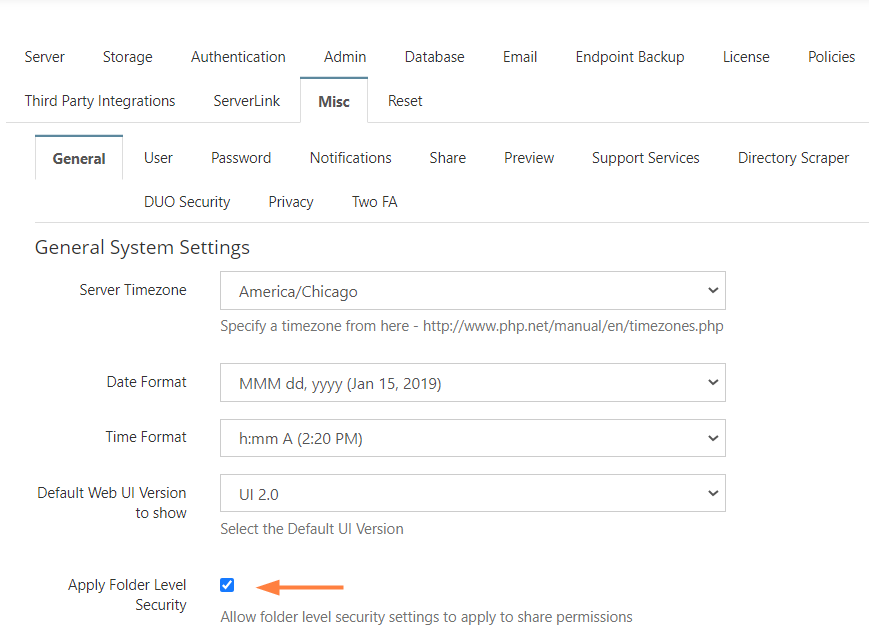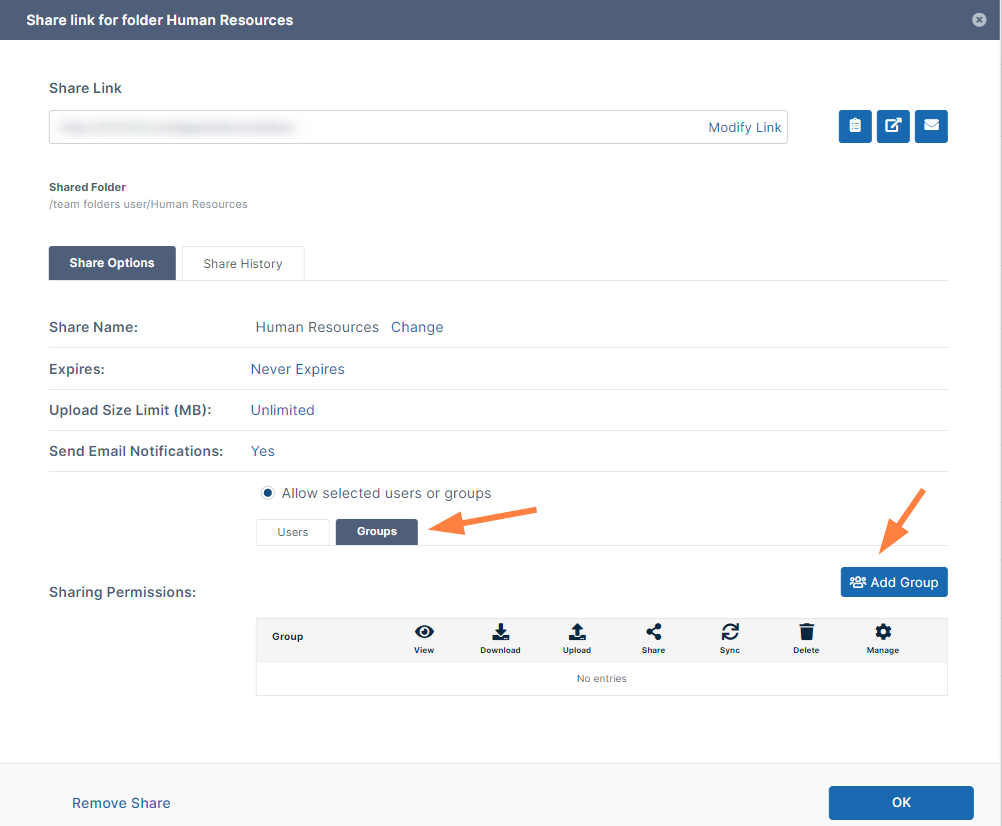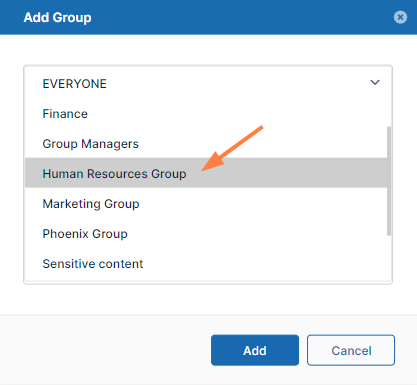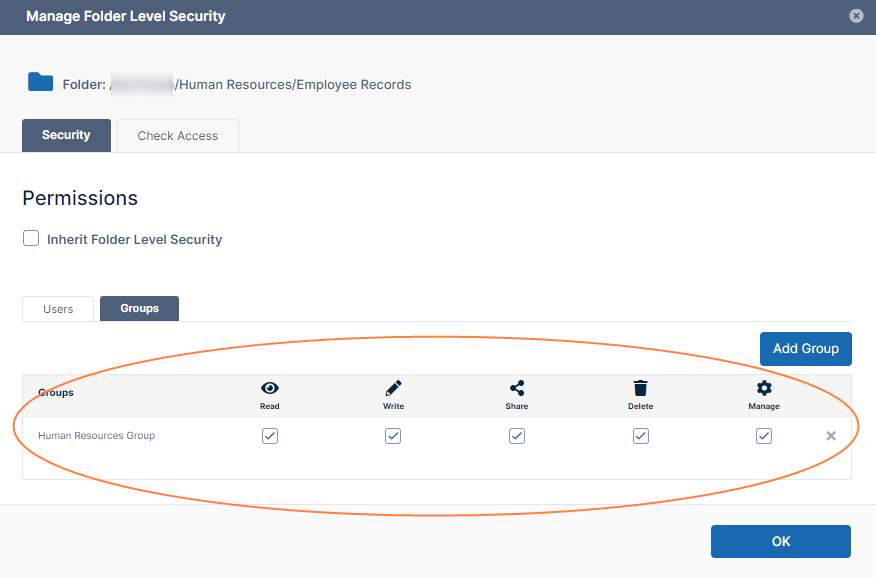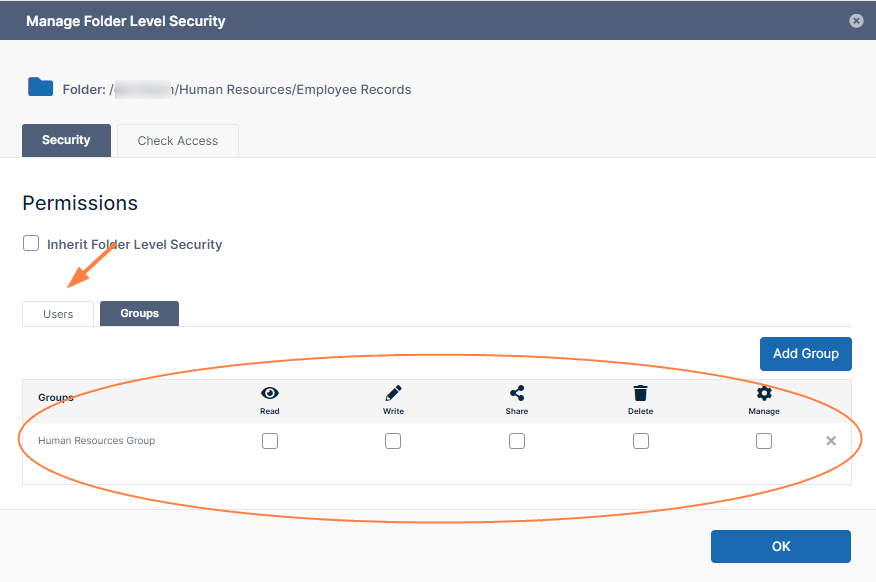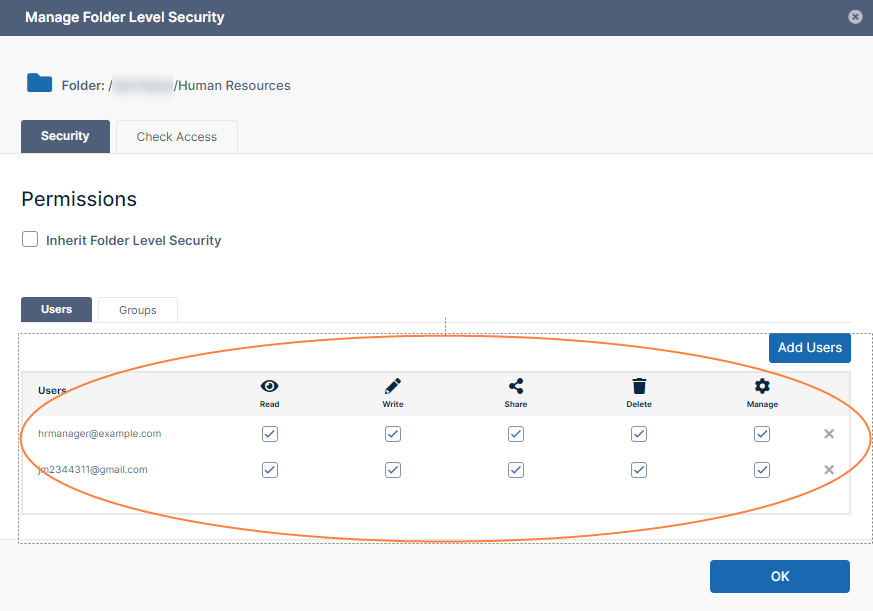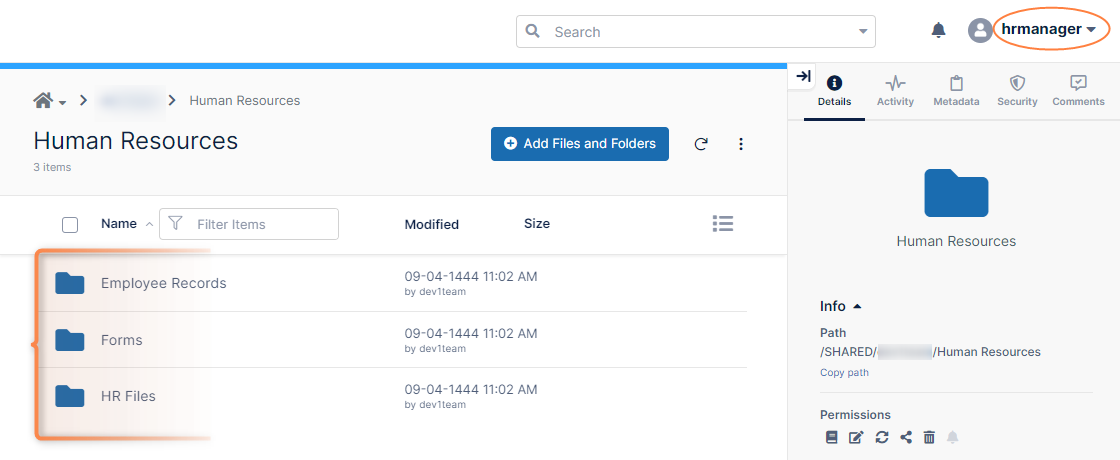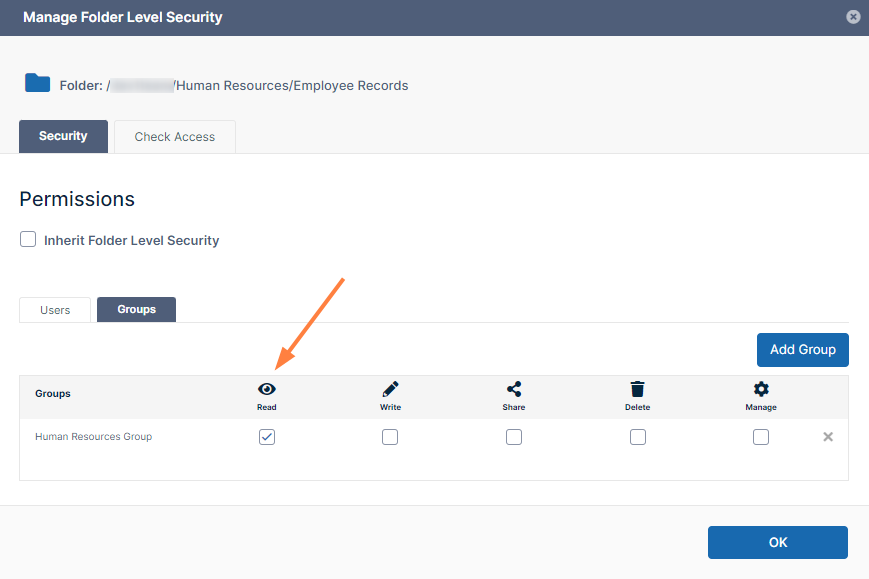Set Granular Permissions on Team Folders
Once a Team Folder is shared, all users with access to the share will see Team Folders in the navigation panel of the user portal and all FileCloud clients such as Sync, Drive, Outlook and the Office Add-In. These users' actions are limited by the share permissions. Additional limitations may be added in addition to the share permissions for specific users and groups in the form of granular permissions.
- Change share permissions on the Team Folder share to enable use of more granular permissions
- Use granular permissions on the Team Folder itself to restrict permissions to specific users and groups. These are applied in addition to the share permissions.
For more information on folder share permissions, read about the Private Share Permissions for Folders.
Enable granular folder level permissions
- Open a browser and log in to the admin portal.
- From the left navigation panel, click Settings.
- On the Settings screen, click the Misc tab.
- On the General sub-tab, select the checkbox Apply Folder Level Security.
Apply granular folder permissions to Team Folders:
You can apply granular folder permissions to the top-level team folder or to its sub-folders.
Here, we will use a common scenario, in which a top-level team folder stores various sub-folders for the team. The entire team is given access to some of the sub-folders, for example, those that contain general information. But only team members whose jobs require more secure information, such as employee ID numbers, are given access to the sub-folders that contain that information.
In this example, we will give the entire Human Resources team access to the HR Files sub-folder, but we will only give the users HR Manager and Jessica access to the Employee Records and Forms sub-folders.
- From the left navigation panel, click Team Folders.
- Hover over the Team Folder (in this case Human Resources), and click the share icon.
A Share link for folder dialog box opens.
First give the entire Human Resources Group access to the Human Resources folder. - Click Allow selected users or groups, and then click the Groups tab.
- Click Add Group.
An Add Group dialog box listing your FileCloud groups opens. - Select the group (Human Resources Group) that you want to give access to the team folder and click Add.
- Enable all permissions to the folder for the group except Manage permission, which is not allowed for a group.
- Close the dialog box.
Restrict permissions to specific users within the group
- Open the Human Resources folder to view its sub-folders.
- We want to give the users HR Manager and Jessica full access to the Employee Records and Forms sub-folders. We don't want to give the other members of the team any access to these sub-folders, but they will still have access to the HR Files folder.
- Hover over the Employee Records folder and click the Permissions icon.
The Manage Folder Level Security dialog box opens for the Employee Records sub-folder. - Click the Groups tab, then click the Add Group button and add Human Resources Group.
By default, it grants all file operation permissions. - To disable the group's access to the Employee Records folder, uncheck the boxes under the operations.
- Then click the Users tab.
- Click Add User and add only the users who you want to give access to the Employee Records folder.
- Repeat steps 3 through 8 for the Forms folder.
Now, when either HR Manager or Jessica logs in to the user portal, they see the Human Resources team folder and all of its sub-folders: Employee Records, HR Files, and Forms.
When another member of the Human Resources group logs in, they see the Human Resources team folder, but only the HR Files sub-folder:
Set special permissions
In the above example, we hid some team folders from most of a group, but we also could have set special permissions. For example, in Step 6, above, instead of removing access to the folder, we could have given read access only:
More Information:
| FileCloud Blogs |
|---|
